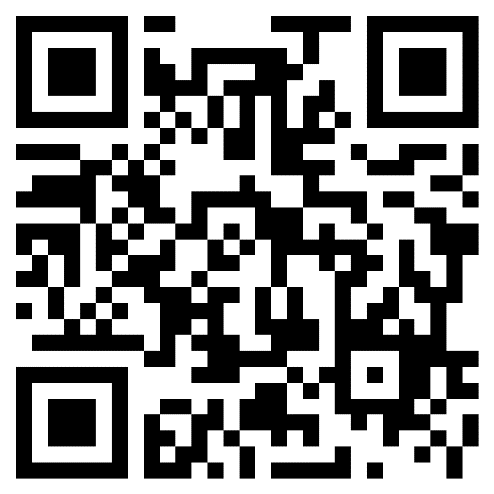

AGSx Virtual Symposium Spring 2023
Key Dates
Overview
Registration
Schedule
Mailing List
Organizing Committee and Production Team
Key Dates
Tuesday, March 7 - Session 1: Genomics for Insects as Food and Feed
Tuesday, April 11 - Session 2: Insect Genome Biology and Evolution
Tuesday, May 9 - Session 3: Beenome100 and Comparative Bee Genomics
Overview
Welcome to the AGSx Virtual Symposium Spring 2023. AGSx is organized and held independent of the annual Arthropod Genomics Symposium (AGS). Goals of the AGSx symposia are to highlight recent advances in Arthropod genomics, on topics from genome assembly, editing and engineering, and focused areas of insects as food and honey bee research. This is an opportunity for additional exchange of ideas and community interaction.
AGSx 2023 is composed of three separate virtual webinars from March to May. Symposia sessions are listed below, and more specific details on speakers will be updated as information becomes available. Questions and open discussions will follow speaker presentations.
Sessions are being recorded and videos are posted within a week of when the session occurs. Once available you will be able to click “Video Recording” at the top of the speaker information table for a link to the session’s recording, available through the i5k Community YouTube Channel. Subscribe to the channel to be notified when new videos are posted.
Registration
Participants are directed to register for one or all symposia sections free of charge using this form. Additional information on presentations and Zoom connections for each session will be announced via a registration email list.
Additionally, those interested in continuing the discussions from these sessions or engaging more broadly with the i5k community are welcome to join the Arthropod Genomics Community Slack Workspace using this link.
Schedule
March 7
Organized and moderated by Kristin Duffield, USDA-ARS, National Center for Agricultural Utilization Research, Peoria, IL USA & Brenda Oppert, USDA ARS, Stored Product Insect and Engineering Research Unit, Manhattan, KS USA
| Session 1: Genomics for Insects as Food and Feed | Video Recording |
|---|---|
 Eliaou Sellem Eliaou Sellem Ynsect, Paris, France | Title: Design of reference population for Tenebrio molitor genomic selection Summary: Tenebrio molitor is now a promising alternative to produce high quality protein products with low environmental impact. However to have a worldwide impact on feed and food alimentation, the production must scale up at industrialization phase and deliver several kilotons of insect proteins per year. This production objective implies an important concentration of individuals in the same place, leading to deal with the genetic diversity and the performance of the strains currently farmed. The long range success of the insect farming industry requires a deep understanding of Tenebrio molitor genetic dimension. However several innovations, in both area of genetics/genomics and automated phenotyping solutions are necessary to develop an efficient selection scheme. That’s why Ÿnsect is leading an ambitious 6 year R&D program called ŸnFABRE, in collaboration with the CEA, Thermo-Fisher and Aprex-Solutions. The main objective of this project is to develop all the required tools to propose a genomic selection scheme adapted to our industrial farming conditions. Four main traits will be selected across generations: reproduction, growth, food efficiency and disease resistance. The first year of the project has seen the construction of the population of reference, regrouping 4,000 phenotyped individuals. This population was generated through single pair matings (1 vs 1) by choosing male and female as distantly related as possible. About 700 couples were mated per generation and 3 generations were needed to form this reference population under pedigree. Several phenotypes have been assessed, a part of them characterized the couple (daily or total egg laying count, hatching rate, larval growth or feed efficiency) and another part was uniquely linked to individual (pupae - imago - adult weight, sex identification or developmental time egg to pupae). After the laying period, the adults were flash-frozen and DNA extracted. A subset have been fully sequenced, identifying all the SNP candidates to produce the genotyping HD array (~700K), and the rest will be genotyped. The genetic study highlighted a part of the variability of assessed phenotypes directly linked to additive genetic effect. Indeed, heritabilities ranged between 0.21 to 0.45 for reproduction phenotypes, 0.12 to 0.57 for growth parameters and 0.20 to 0.46 for developmental time according to the parameter studied. While waiting for the genotyping results and the calculating of GEBVs, this genetic study will allow us to establish the first lines selected for traits of interest based on EBVs. |
 Maria Martinez Castillero Beta Bugs, Roslin Innovation Centre, University of Edinburgh, Roslin, United Kingdom | Title: Implementation of genetics and technology for Black Soldier fly production Summary: Insect farming industry is on early stages. The main focus has been on rearing conditions and mass production, and currently we can see that genetics is getting the attention. Besides, Black Soldier fly is emerging as the top species for feed as it valorises the waste stream. This presentation showcases the work done in Beta Bugs, an insect genetics company, alongside Roslin Institute, during the past year. The main focus has been putting in place processes and strategies alongside technology tools, enabling us to implement selective breeding and standardise practices in a novel sector in which there is not an ABC of how a breeding programme should be implemented and we are learning as we go. |
 Elida Espinoza Elida Espinoza Research Entomologist (Genetics), Genetics R&D at EnviroFlight, Apex, North Carolina USA | Title: Creating an efficient breeding program for the black soldier fly (Hermetia illucens) Summary: Among the insect production industry, breeding programs have begun to improve insect rearing and quality. Most black soldier fly (BSF) breeding programs primarily use established commercial populations for artificial selection, as these domesticated populations are already thriving in captivity. We can begin to build our BSF breeding programs using other animal model systems as guides for best practices. For example, the importance of forming of a base population for the success of a long-term selection strategy. Developing tools to quantify differentiation between populations, define selected lines or families, and continuously monitor the health and diversity of your brood stock. In this presentation, we explore the importance of defining and monitoring the genetic heterogeneity of BSF populations used in breeding programs. |
April 11
Organized and moderated by Lindsey Perkin, USDA-ARS, Insect Control and Cotton Disease Research Unit, College Station, TX, USA
| Session 2: Insect Genome Biology and Evolution | Video Recording |
|---|---|
 John Sproul John Sproul Department of Biology, University of Nebraska Omaha, Omaha, Nebraska USA | Title: Hundreds of insect genomes reveal a dynamic landscape of repetitive elements and illustrate annotation challenges in the era of biodiversity genomics Summary: Repetitive elements (REs) are integral to the composition, structure, and function of eukaryotic genomes, yet remain understudied in most taxonomic groups. This study examines REs across 601 insect species and reports wide variation in REs dynamics across groups. Analysis of associations between REs and protein-coding genes revealed dynamic evolution at the interface between REs and coding regions across insects, including notably elevated RE-gene associations in lineages with abundant long interspersed nuclear elements (LINEs). We leveraged this large, empirical data set to quantify impacts of long-read technology on RE detection and investigate fundamental challenges to RE annotation in diverse groups. In long-read assemblies we detected ~36% more REs than short-read assemblies, with long terminal repeats (LTRs) showing 162% increased detection, while DNA transposons and LINEs showed less respective technology-related bias. In most insect lineages, 25–85% of repetitive sequences were “unclassified” following automated annotation, compared to only ~13% in Drosophila species. Although the diversity of available insect genomes has rapidly expanded, we show the rate of community contributions to RE databases has not kept pace, preventing efficient annotation and high-resolution study of REs in most groups. We highlight the tremendous opportunity and need for the biodiversity genomics field to embrace REs and suggest collective steps for making progress towards this goal. |
 Dorothea Tholl Dorothea Tholl Department of Biological Sciences, Virginia Tech, Blacksburg, Virginia USA | Title: Genomic organization and evolution of terpene pheromone biosynthetic genes in stink bugs Summary: Insects release volatile compounds of the diverse class of terpenes as pheromones or for chemical defense. Surprisingly little is known about whether insects can synthesize terpenes de novo and how terpene biosynthetic genes have evolved in insect genomes. To address these questions, we investigated the family of isoprenyl diphosphate synthase (IDS)-like genes with terpene synthase (TPS) function in the diverse group of stink bugs (Pentatomidae). Stink bugs include economically important pests with severe impact on many agricultural crops in the Neotropics and worldwide. We found that species of different geographical origin maintain small IDS-type families with genes of conserved TPS function, which give rise to structurally related terpene sex or aggregation pheromones. IDS-type TPS enzymes likely emerged at the onset of pentatomid evolution over 100 million years ago, coinciding with the evolution of flowering plants. Expanded gene mining and phylogenetic analysis in other hemipteran insects provided evidence for an ancient emergence of IDS-like genes from canonical IDSs, and this process occurred independently from a similar evolution of IDS-type TPS genes in beetles. Knowledge of pheromone biosynthesis in stink bugs may lead to the development of new controls of these pests. |
 Amanda Roe Amanda Roe Natural Resources Canada, Canadian Forest Service, Great Lakes Forestry Centre, Canada | Title: Host plant and environmental structuring of forest tent caterpillar genomic variation Summary: Diverse geographic, environmental, ecological factors affect gene flow and adaptive genomic variation within species. We used landscape genomics to identify determinants of population structure and genomic differentiation in the forest tent caterpillar, Malacosoma disstria, a widespread pest of deciduous trees in North America. To quantify the effects of geography, variation in environmental conditions, and host association on population structure and genomic differentiation, we sampled thousands of genome-wide single nucleotide polymorphisms (SNPs) in larvae collected from four common host tree species in eastern Canada. Using a combination of reciprocal causal models (RCM) and distance-based redundancy analyses (dbRDA), we show that genomic differentiation within M. disstria is not discrete in eastern populations and is best explained by a combination of isolation by distance, isolation by environment (differences in summer temperatures and length of the growing season). Our study provides the first genetic evidence of host-associated differentiation in M. disstria, supporting earlier documentation of host-specific fitness differences. We conclude that ecologically-mediated selection is contributing to variation within M. disstria, and that divergent adaptation should be considered in ongoing management of this widespread, irruptive forest pest. |
May 9
Organized and moderated by Jay Evans, USDA-ARS, Bee Research Laboratory, Beltsville, MD, USA
| Session 3: Beenome100 and Comparative Bee Genomics | Video Recording |
|---|---|
 Margarita Lopez-Uribe Margarita Lopez-Uribe Department of Entomology, Penn State University, University Park, Pennsylvania USA | Title: Phylogenomics and the impacts of agriculture on a native squash bee Summary: The expansion of agriculture has accelerated the conversion of natural habitats into productive areas dominated by crops. These land-use changes have precipitated the local extinction of many wild bee species, while other species have benefited and adapted to the expansion of agricultural niches. In this talk, I will present a summary of studies on the phylogeography and population genomics of the squash bee Eucera pruinosa that indicate that the recent demographic history of this crop pollinator has been shaped by the expansion and intensification of agriculture. Squash bees have the potential to become model systems to understand how bee pollinators are adapting to the new ecological conditions that agricultural environments are posing on them. |
 Arian Avalos USDA-ARS, Honey Bee Breeding, Genetics, and Physiology Research Unit, Baton Rouge, Louisiana USA | Title: The honey bee pangenome: A key tool for cataloguing and analyzing genetic information Summary: Honey bee populations are known to be highly genetically diverse, however, the current approaches to exploring this variation are limited. Specifically, much of what is known in honey bee genetics is dependent on the degree of similarity to a single reference genome. Though efforts have been made to develop subspecies-specific references, allowing for a higher degree of resolution, this alternative is still limited in the scope of genetic variation examined. Here we outline the current challenges and present a set of ongoing and future projects that aim to improve the study of honey bee genetic variation. We describe our efforts to develop a honey bee pangenome for research populations and outline future goals towards a honey bee pangenome that incorporates world-wide variation. The primary aims of this effort are to (1) introduce a working approach towards development and practical use of pangenomes in honey bee research, and (2) to provide tools in the form of graph assemblies and a catalogues of honey bee genetic diversity. We hope insights from these projects will inform future honey bee research and establish a robust approach towards our greater understanding of honey bee genetic variation. |
 Katherine Parys Katherine Parys USDA-ARS, Pollinator Health in Southern Crop Ecosystems Research Unit, Stoneville, Mississippi USA  Michael Branstetter Michael Branstetter USDA-ARS, Pollinating Insect-Biology, Management, Systematics Research Unit, Logan, Utah USA | Title: A peek into the bees of Beenome100 Summary: Bees comprise over 4000 species in North America and 20,000 species globally and are vital pollinators of flowering plants in natural and agricultural landscapes. The Beenome100 project is a collaborative effort across 14+ USDA and university research groups that aims to sequence 100+ reference quality genomes for bees, focusing on species that occur in the United States of America. We present an overview of the project and then focus on the process of choosing taxa, hunting and collecting specimens, and submitting samples for sequencing, alongside some of the lessons we’ve learned along the way. We’ll also be discussing the sequencing and assembly process and will present vignettes of some of the species we’ve sequenced thus far, focusing on their importance within the larger beenome project. |
| Panel | Roundtable Discussion of Beenome100 Priorities |
Mailing List
To keep up to date with news about this conferece, the i5k webinar series and other i5k activities, please subscribe to the Arthropod News mailing list. Email frequency is typically very low.
Organizing Committee and Production Team
This virtual symposium series was brought to you through the efforts of the following organizing committee and production team:
- Brenda Oppert, USDA-ARS, Manhattan, KS, USA
- Kristin Duffield, USDA-ARS, Peoria, IL USA
- Lindsey Perkin, USDA-ARS, College Station, TX, USA
- Jay Evans, USDA-ARS, Beltsville, MD, USA
- Pia Olafson, USDA-ARS, Kerrville, TX, USA
- Glenn Hanes, USDA-ARS, Beltsville, MD, USA
- Anna Childers, USDA-ARS, Beltsville, MD, USA
- Robert Waterhouse, University of Lausanne, Switzerland
- Brad Coates, USDA-ARS, Ames, IA, USA